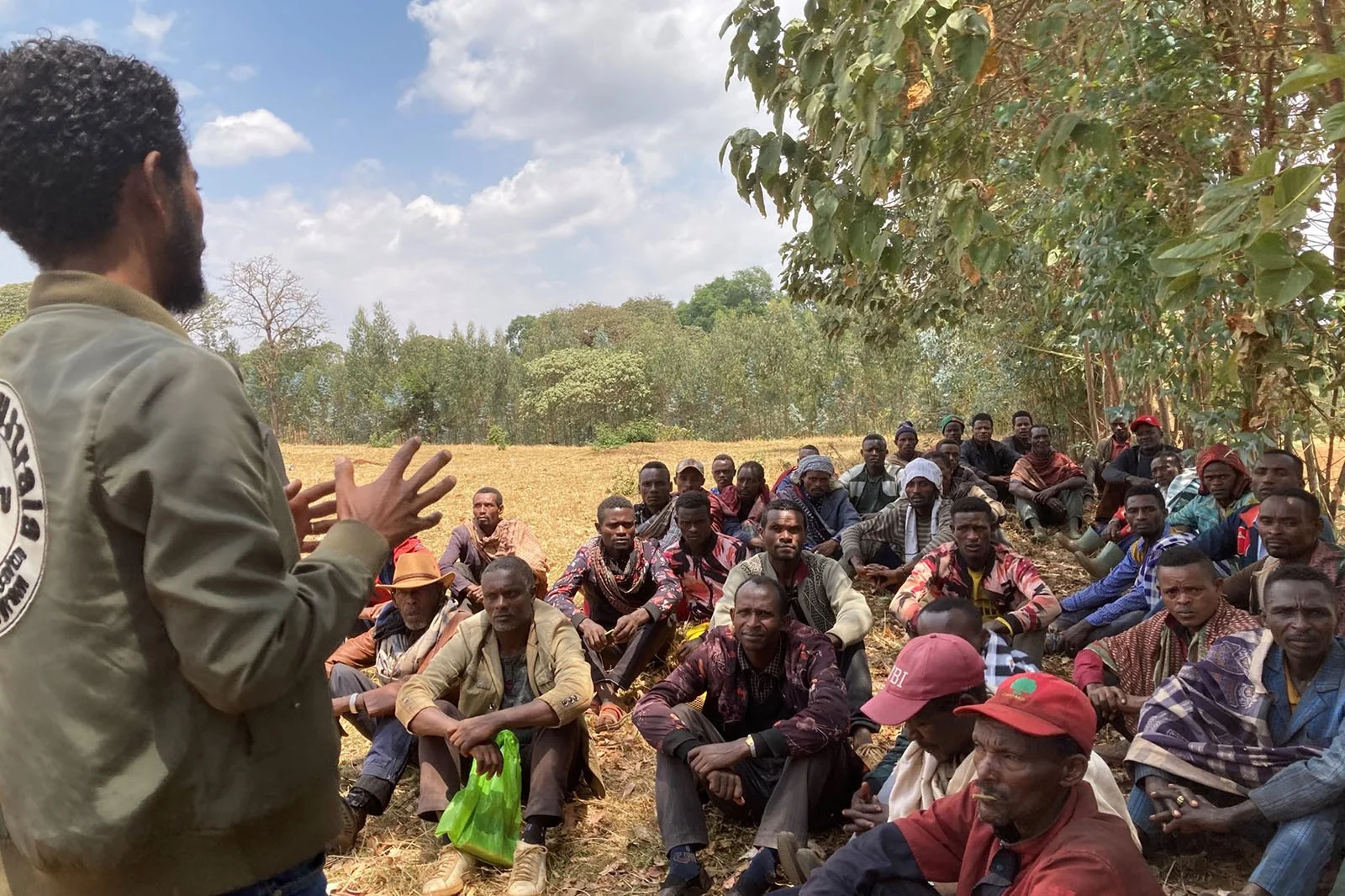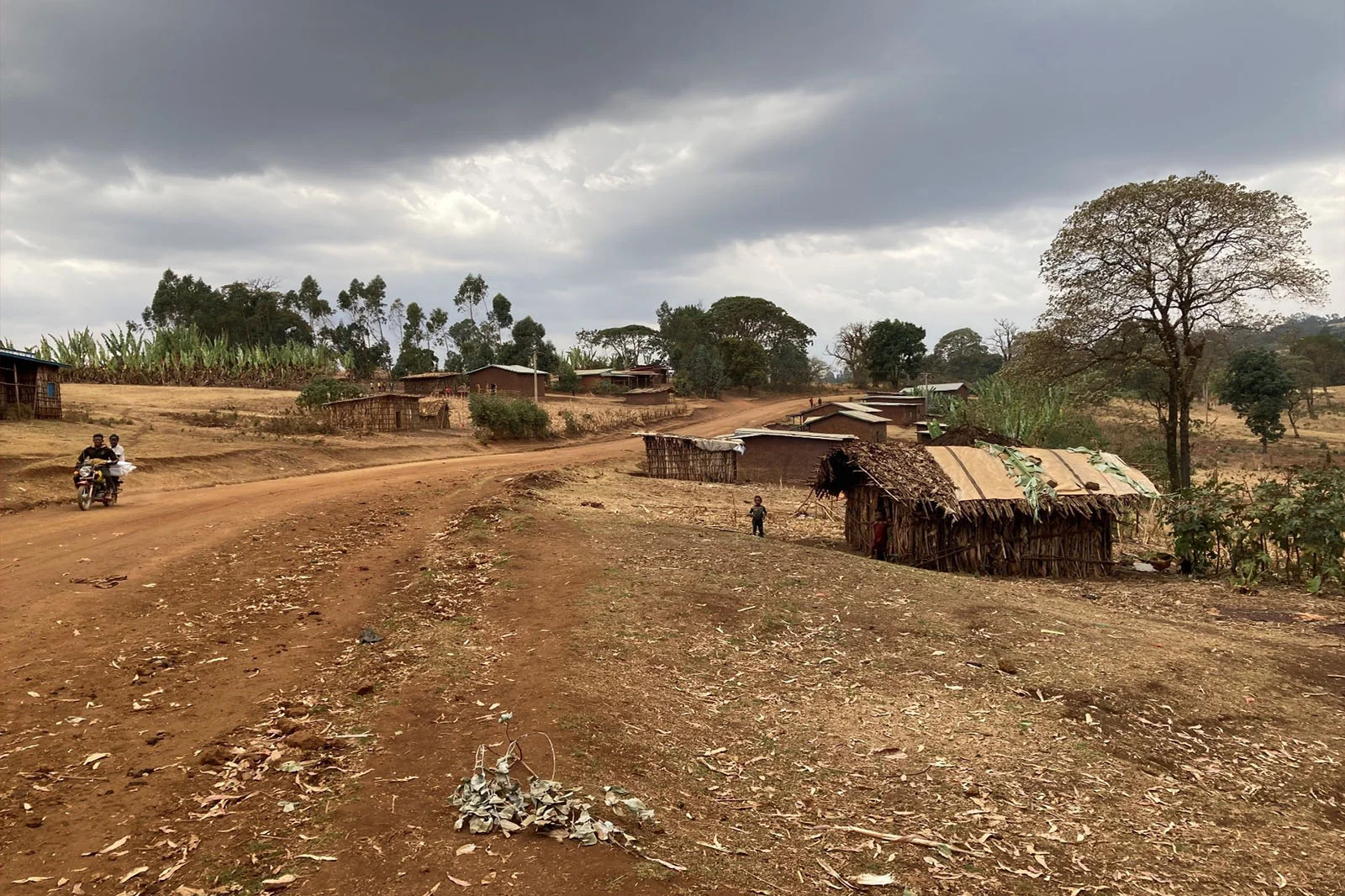Initial situation
At 871 square kilometers, Hambela Wamena is roughly the same size as the canton of Schwyz. In the Ethiopian district, around 214,000 residents live with almost no infrastructure. Only 13 percent of families have safe drinking water. The vast majority have to get their supplies from polluted watercourses, which makes children sick. The population consists of small farmers and day laborers. Industry never settled. Trade is restricted because there are almost no paved roads. During the long rainy season between April and October, the dusty slopes turn into mud slides on many days.
There are no banks either. Small farmers only have the opportunity to get money from private lenders in order to buy seeds or fertilizer - at extortionate interest rates of 100 percent or more.
So they cultivate their tiny fields, averaging just 0.6 hectares, inefficiently and harvest far less than they could. Large families with an average of seven members cannot be fed in this way. Many young people therefore migrate, at least temporarily, in the hope of earning at least enough as day laborers elsewhere to be able to buy food. Only one in a hundred families in the county reported eating three meals a day in a Menschen für Menschen baseline study. Because of poverty, people usually only eat twice. In the months leading up to the next harvest, many families reduce their consumption to one small meal per day. In an initial study, 96 percent of residents stated that they do not have enough to eat all year round. They regularly skip meals and only eat small portions. 29 percent of those surveyed have to tighten their belts in this way for up to four months. 69 percent of families go hungry for five to eight months a year. They usually eat kotscho, a starchy bread-like food made from the starch of the ensete (“false banana”). The unbalanced diet hinders children's development and endangers their health.

Our help for self-development
A stable existence at home
We want to improve the lives of 3,600 day laborer and small farmer families with a total of 25,000 members. The previously starving population should achieve better harvests and incomes in order to be able to lead a stable and dignified life in their home villages. We try to achieve this goal through six complementary components.
1. Harvest more on scarce land
96 percent of the inhabitants in the district are temporarily restricting themselves, reducing the number of meals and the amount of food they eat: families are starving because their harvest supplies have been used up. Our experts show the small farmers modern and adapted farming methods and how they can increase and diversify their harvests, for example with protein-rich pulses. The seeds are provided as a kind of loan within the framework of cooperatives. After the harvest, the farmers pay the cost of the inputs back to the cooperative.
2. More livestock for poor families
The families have little opportunity to get cash because they cannot sell their harvests because otherwise they would go hungry. Cattle fattening offers a way out here. Also as part of a loan, farmers receive sheep, goats and oxen. After fattening, they can sell the animals for a profit. This is how they create assets. The families can invest, for example buying fertilizer and improved seeds.
3. Join forces in cooperatives
When farmers join together in savings groups and cooperatives, it is easier for them to access agricultural inputs, market access and microcredit. That's why we support them in joining together in cooperatives. This allows families to bypass middlemen and free themselves from the exorbitant interest rates charged by private moneylenders.
4. New power for natural resources
Due to overpopulation, every last meter of the land is used. The soil is eroding and exhausted. Climate change is increasing the negative development with erratic rainfall. We supply the small farmers with tree seedlings. We train them in protecting the topsoil. We show them methods adapted to climate change, such as agroforestry, where coffee bushes and vegetables thrive under shade trees.
5. Safe water, lower healthcare costs
In our baseline study, two-thirds of families surveyed reported members suffering from water-related illnesses. Children are particularly affected. About a tenth of the family income has to be spent on medicine for these diseases. People need safe drinking water. We are providing 16 new water points and repairing ten wells. Around 4,000 people benefit from this.
6. Plan families!
An average family has five children - the scarce fields cannot ensure prosperity for the many people. In addition to our agricultural training, we provide information about family planning. Student clubs that provide information about reproductive health are being created at 13 schools. We sensitize elders and priests. So that women know which contraceptives they can request in the state health stations and only have the number of children they actually want.
